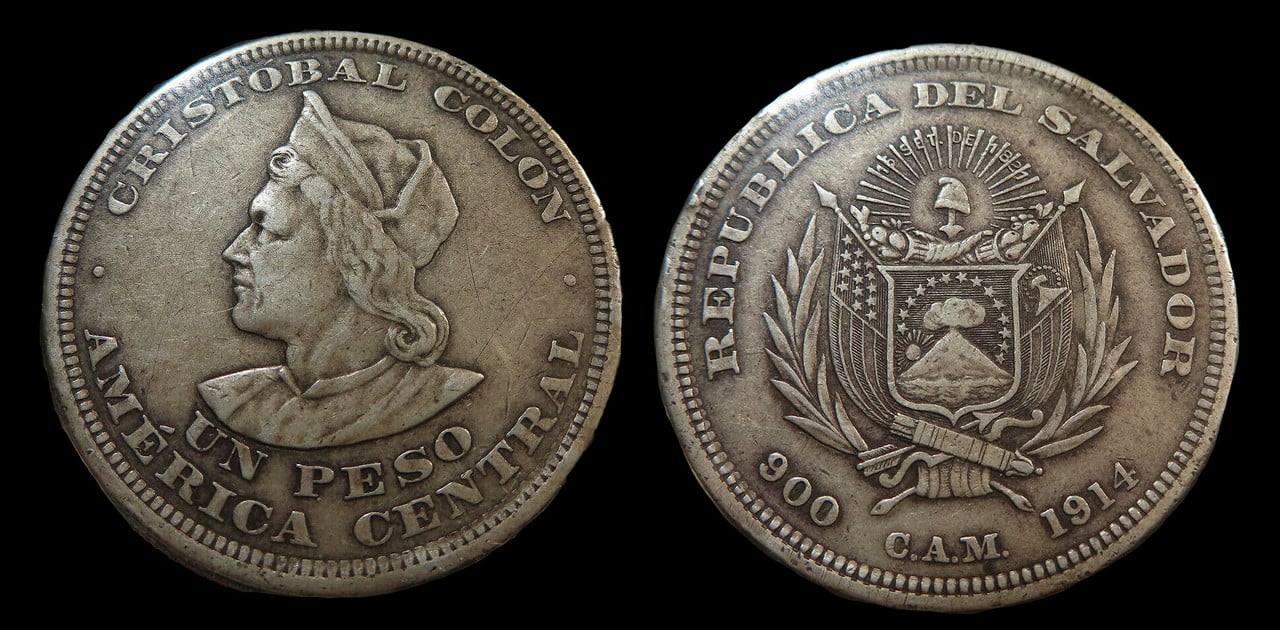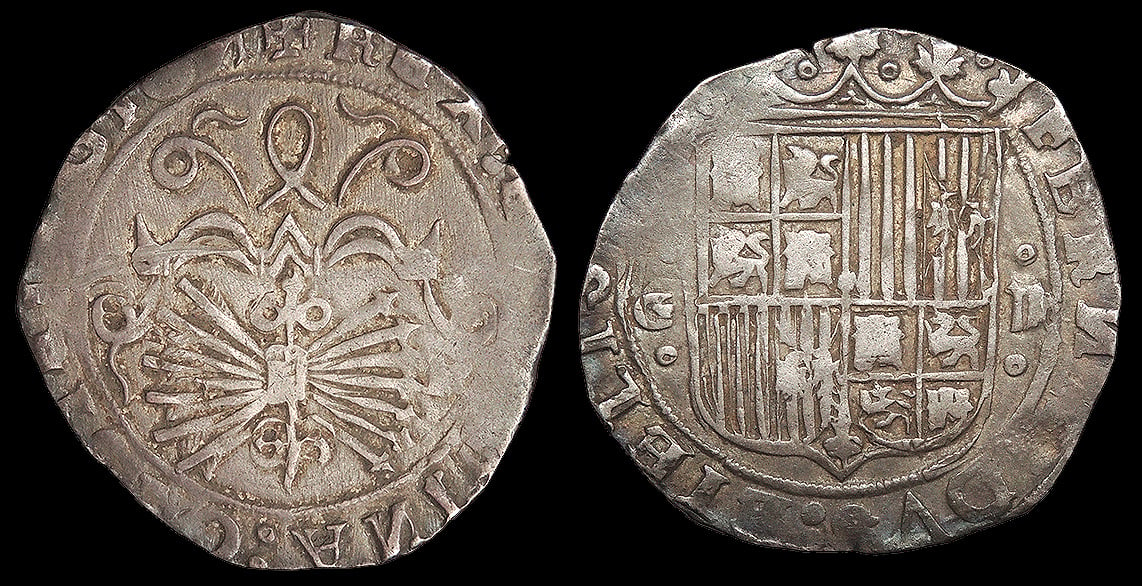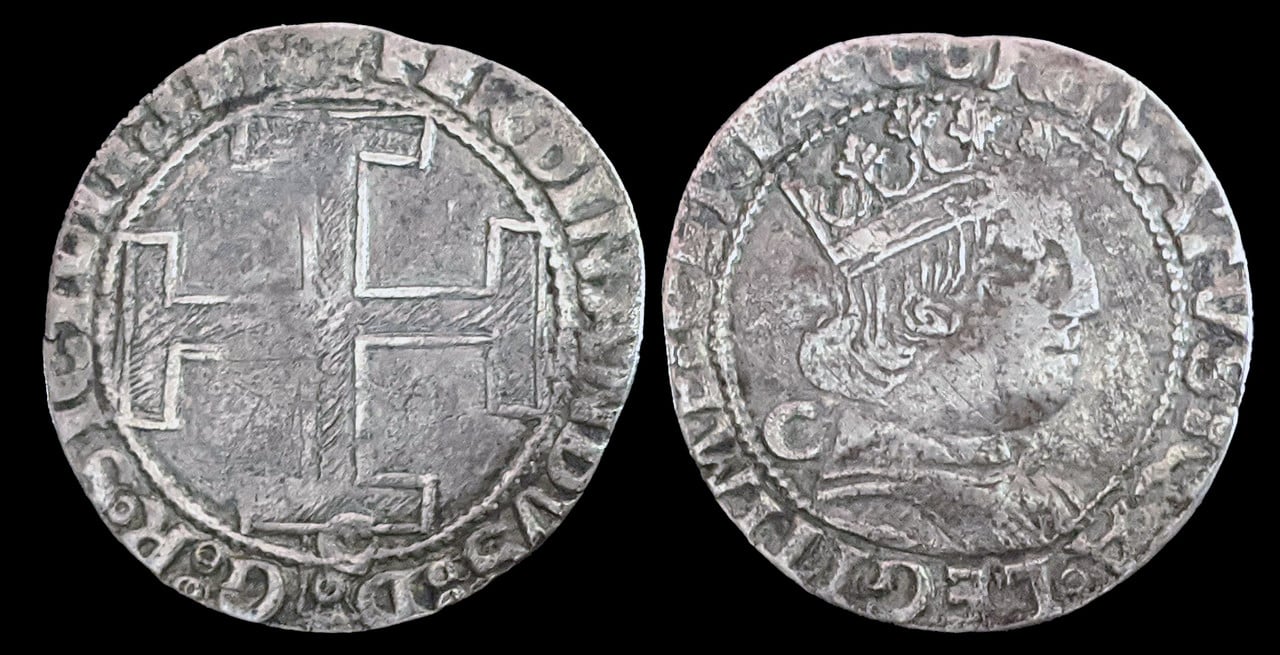Coins are Neato!
"If it's a penny for your thoughts and you put in your two cents worth, then someone...somewhere...is making a penny." - Steven Wright
Who funded Christopher Columbus’s expedition:
Ferdinand & Isabella (1469 - 1504)
SPAIN Castile & Leon (Castilla y Leon)
AR 2 Reales
FERDANDVS : ET : HELISABET : D :
Crowned shield of arms breaking inner beaded circle.
: REX : ET REGINA : CAST : LEGIO : ARAGON
Bow and arrows within beaded inner circle
Granada Mint. 29mm
6.80g.
Cayon 2622
Ferdinand I himself.
Ferdinando I (Don Ferrante). (1458 - 1494 A.D.)
ITALY, Napoli (Regno)
AR Coronato
Third Coinage, Class 2.
O: FRDINANDVS D G R SICI IER V, cross potent; annulet and double annulet stops.
R: CORONATVS QA LEGITIME CERTA, crowned bust right; annulet and double annulet stops. C to left.
Napoli (Naples) mint. Struck 1472-1488
2.59g
25mm
CNI XIX 348/347 (obv./rev.); cf. Pannuti-Riccio 16b (for type); MIR 68/16; cf. MEC 14, 981-2 (same)
This medal is probably the most common piece that is associated with St. Gaudens. The reverse was by Charles Barber, which was the start of the problem. St. Gaudens did not want to work with the U.S mint after this. Notice that there were topless females on Barber’s reverse.
This reverse, which St. Gaudens designed, was too risque for Victorian sensibilities. The model for the nude man was St. Gaudens' son, Homer.
Retired dealer and avid collector of U.S. type coins, 19th century presidential campaign medalets and selected medals. In recent years I have been working on a set of British coins - at least one coin from each king or queen who issued pieces that are collectible. I am also collecting at least one coin for each Roman emperor from Julius Caesar to ... ?
Comments
Coins are Neato!

"If it's a penny for your thoughts and you put in your two cents worth, then someone...somewhere...is making a penny." - Steven Wright
My avatar is from an 1892 Columbian Expo medal. Interesting rendering because it’s more of a 17th century style with a van dyke beard.
El Salvador Peso

Who funded Christopher Columbus’s expedition:

Ferdinand & Isabella (1469 - 1504)
SPAIN Castile & Leon (Castilla y Leon)
AR 2 Reales
FERDANDVS : ET : HELISABET : D :
Crowned shield of arms breaking inner beaded circle.
Bow and arrows within beaded inner circle
Granada Mint. 29mm
6.80g.
Cayon 2622
Ferdinand I himself.

Ferdinando I (Don Ferrante). (1458 - 1494 A.D.)
ITALY, Napoli (Regno)
AR Coronato
Third Coinage, Class 2.
O: FRDINANDVS D G R SICI IER V, cross potent; annulet and double annulet stops.
R: CORONATVS QA LEGITIME CERTA, crowned bust right; annulet and double annulet stops. C to left.
Napoli (Naples) mint. Struck 1472-1488
2.59g
25mm
CNI XIX 348/347 (obv./rev.); cf. Pannuti-Riccio 16b (for type); MIR 68/16; cf. MEC 14, 981-2 (same)
Commems and Early Type
Happy COLUMBUS DAY!!
Sometimes, it’s better to be LUCKY than good. 🍀 🍺👍
My Full Walker Registry Set (1916-1947):
https://www.ngccoin.com/registry/competitive-sets/16292/
I know, been meaning to fix that!
Disclaimer: I'm not a dealer, trader, grader, investor or professional numismatist. I'm just a hobbyist. (To protect me but mostly you! 🤣 )
Happy Indigenous People's Day!
Looking for Top Pop Mercury Dime Varieties & High Grade Mercury Dime Toners.
Steve
My collecting “Pride & Joy” is my PCGS Registry Dansco 7070 Set:
https://www.pcgs.com/setregistry/type-sets/design-type-sets/complete-dansco-7070-modified-type-set-1796-date/publishedset/213996
Here's one with a little ocean blue-
In honor of the memory of Cpl. Michael E. Thompson
"Those who would give up essential Liberty, to purchase a little temporary Safety, deserve neither Liberty nor Safety," --- Benjamin Franklin
My Original Song Written to my late wife-"Plus other original music by me"
https://youtube.com/playlist?list=PL8A11CC8CC6093D80
U.S. Army Veteran 1/11 ACR Fulda, Germany
This medal is probably the most common piece that is associated with St. Gaudens. The reverse was by Charles Barber, which was the start of the problem. St. Gaudens did not want to work with the U.S mint after this. Notice that there were topless females on Barber’s reverse.
This reverse, which St. Gaudens designed, was too risque for Victorian sensibilities. The model for the nude man was St. Gaudens' son, Homer.
My 1796: